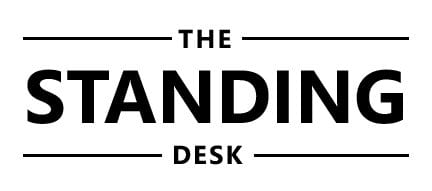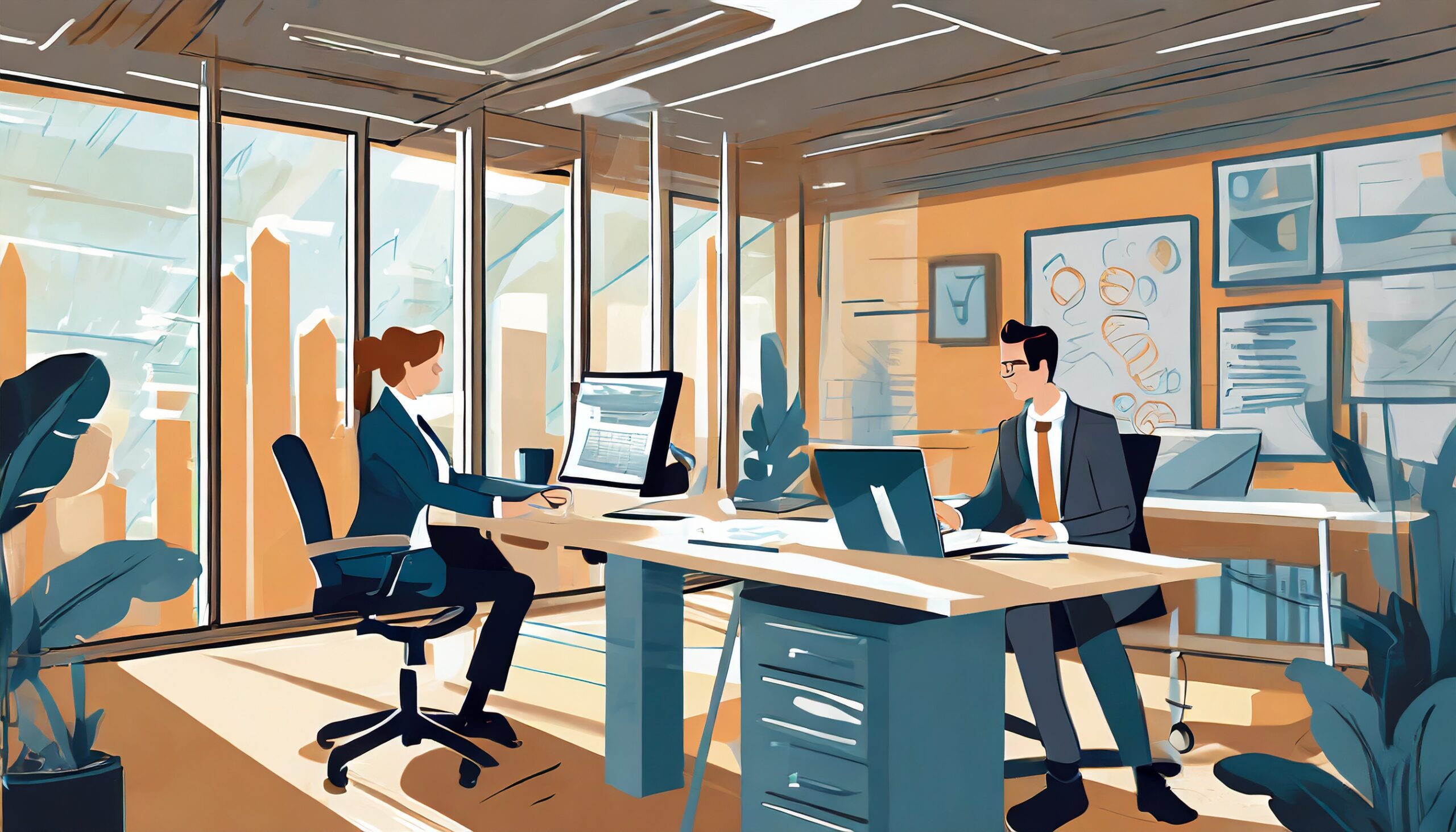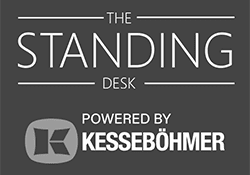The Link Between Standing Desks and Improved Productivity
In today’s fast-paced work environment, maintaining consistent productivity is more than just a goal—it’s a necessity. As professionals, our output often defines our value in the workplace, influencing everything from job security to career advancement. Yet, despite our best efforts, many of us find ourselves battling frequent productivity slumps, leading to feelings of frustration and inadequacy.
Enter the standing desk—a tool that promises more than just a change in posture. While the health benefits of standing desks have been widely discussed, their potential to combat productivity challenges remains an intriguing topic of exploration. By offering a fresh perspective—both literally and figuratively—standing desks may hold the key to unlocking sustained focus, efficiency, and job satisfaction.
The Direct Link Between Productivity and Job Satisfaction
Productivity is not just about completing tasks; it’s intrinsically tied to our sense of self-worth and professional identity. When we’re productive, we feel a sense of accomplishment, validating our contributions and reinforcing our value within the team. This positive feedback loop directly influences our overall job satisfaction, making us more engaged and committed to our roles.
Conversely, when productivity wanes, it can lead to feelings of inadequacy. Doubts begin to creep in, questioning our capabilities and the quality of our work. Over time, these feelings can erode our confidence, making us hesitant to take on new challenges or voice our ideas. The result? A decline in job satisfaction, which can have cascading effects on our motivation, engagement, and even our career trajectory.
Standing desks, in this context, offer more than just a change in physical position. They represent a proactive approach to tackling productivity challenges head-on. By breaking the monotony of the traditional seated workspace, they invigorate our work environment, potentially reigniting our passion and drive. As we’ll explore in the subsequent sections, this simple change can have profound effects on our productivity and, by extension, our overall job satisfaction.
The Hidden Costs of Productivity Loss
While the immediate effects of a productivity slump—such as missed deadlines or a backlog of tasks—are evident, the hidden costs run much deeper and can have lasting implications on an individual’s professional journey.
Decreased Motivation: Consistent productivity challenges can lead to a diminished drive to excel. When our efforts don’t yield the desired results, it’s natural to question the purpose of our endeavors, leading to a drop in motivation.
Feelings of Inadequacy: Regularly falling short of our productivity goals can foster feelings of self-doubt. This can manifest as hesitation in taking on new projects, reluctance in sharing ideas, or even avoiding team collaborations.
Burnout: Continuously pushing oneself to catch up, coupled with the stress of underperformance, can lead to burnout—a state of chronic physical and emotional exhaustion. This not only affects productivity further but can also impact overall well-being.
Missed Opportunities: Reduced productivity can result in missed opportunities for growth. Whether it’s a chance to lead a new project, attend a valuable workshop, or even a potential promotion, productivity challenges can inadvertently close doors.
Impact on Team Dynamics: An individual’s productivity challenges can ripple out to affect the entire team. It can lead to uneven work distribution, increased pressure on colleagues, and potential conflicts.
Standing desks, in their role as productivity boosters, offer a solution to these hidden challenges. By addressing the root causes of productivity loss, they provide an avenue for professionals to regain control of their work, rebuild confidence, and reestablish their place as valuable team members.
Addressing Common Misconceptions About Standing Desks and Productivity
While the benefits of standing desks in boosting productivity are becoming increasingly evident, there are still some misconceptions that need to be addressed:
“Standing All Day Increases Productivity”:
It’s essential to strike a balance. Standing all day can be as detrimental as sitting continuously. The key is to alternate between sitting and standing to maintain energy levels and focus.
“Standing Desks are a Distraction”:
Some believe that the novelty of a standing desk can be a distraction. However, once integrated into one’s routine, it becomes a tool for enhancing productivity rather than a novelty.
“Productivity Gains are Short-lived”:
While there might be an initial surge in productivity due to the novelty factor, many users report sustained benefits as they adapt to their new work setup.
“They’re Only Suitable for Certain Professions”:
While some jobs might naturally lend themselves to a standing posture, almost any profession can benefit from the flexibility of alternating between sitting and standing.
“It’s Just a Trend”:
With mounting evidence supporting the productivity benefits of standing desks, it’s clear that they’re more than just a passing trend. They address fundamental workplace challenges and offer solutions that have a lasting impact.
By understanding and addressing these misconceptions, we can better appreciate the genuine value that standing desks bring to the modern workplace, particularly in enhancing productivity.
Embracing the Future of Productive Workspaces
The modern workplace is in a state of constant evolution, with innovations aimed at enhancing efficiency, comfort, and overall productivity. Standing desks, once considered a mere trend, have firmly established themselves as a valuable tool in this quest for optimal workplace performance.
By addressing the root causes of productivity loss and offering a flexible solution, standing desks empower individuals to take control of their work environment. The result is not just an increase in task completion rates but also an improvement in job satisfaction and overall well-being.
As more organizations and professionals recognize the profound impact of standing desks on productivity, it’s clear that they are more than just a piece of office furniture. They represent a shift in how we approach work, emphasizing the importance of flexibility, comfort, and the undeniable link between our work environment and our output.
For those still on the fence about making the transition, consider the testimonials, the data, and the potential for a more productive and satisfying work experience. The future of productive workspaces is standing tall, and it’s time to stand with it.
The Empirical Evidence: Standing Desks and Enhanced Productivity
While the ergonomic benefits of standing desks have been widely discussed, their direct impact on productivity is a topic of growing interest. Several studies and articles have delved into this relationship, and the results are compelling.
Reduced Sitting Time and Improved Work Performance
A study titled “Effects of a Workplace Sit–Stand Desk Intervention on Health and Productivity” (link) assessed the relationship between the introduction of sit–stand desks and their potential to reduce the negative effects of prolonged sitting. Notably, the results indicated that employees who utilized these desks significantly decreased their sitting time at work. Furthermore, these employees reported reduced neck and shoulder pain, increased vitality in work-related engagement, and an improvement in self-rated work performance over a four-week period.
Potential for Increased Creativity
Harvard Health, in its article “The truth behind standing desks” (link), touches upon the potential of standing desks to foster increased efficiency or creativity. While the article discusses various facets of standing desks, the underlying message is that these desks can be more than just a health benefit; they can be a tool for enhanced work performance.
Incorporating standing desks into the workplace isn’t just a health-driven decision; it’s a strategic move for businesses aiming to boost employee productivity. The empirical evidence supports the notion that standing desks can be a catalyst for improved work performance, making them a worthy investment for forward-thinking companies.
The Personal Impact of Productivity Loss and How Standing Desks Can Help
Productivity isn’t just about numbers and output; it’s deeply intertwined with an individual’s sense of job satisfaction and overall well-being. When productivity wanes, it doesn’t just affect the bottom line of a company; it impacts the individual on a personal level.
The Emotional Toll of Decreased Productivity
When an individual consistently feels they aren’t achieving their best or meeting their own standards, it can lead to feelings of inadequacy. Over time, this can result in decreased self-esteem, increased stress, and even symptoms of burnout. The emotional toll of not being productive can overshadow the joy and satisfaction one derives from their job.
Job Satisfaction and Personal Well-being
Job satisfaction is closely linked to one’s sense of productivity. When employees feel they are making meaningful contributions, it boosts their morale and job satisfaction. Conversely, a decline in productivity can lead to feelings of disillusionment and a decreased sense of purpose.
Addressing the Root Cause with Standing Desks
While there are myriad factors that can influence productivity, the work environment plays a pivotal role. Traditional desks, which promote prolonged sitting, can lead to physical discomfort and mental lethargy, both of which are detrimental to productivity. Standing desks, on the other hand, offer a dynamic work environment. The simple act of standing can enhance alertness, improve focus, and promote a more active engagement with one’s tasks. By addressing the root cause of decreased productivity, standing desks offer a tangible solution to a multifaceted problem.
A Shift in Perspective: Standing for Productivity
Adopting standing desks isn’t just about changing a piece of furniture; it’s about changing one’s approach to work. By recognizing the profound impact of our work environment on our productivity, we can make informed choices that benefit not just our professional output but our personal well-being.
The Domino Effect: How Enhanced Productivity Influences the Broader Work Environment
When an individual’s productivity improves, it doesn’t just benefit them personally. This enhancement has a ripple effect, influencing the broader work environment and the collective output of a team or organization.
Setting the Tone for the Team
An individual who consistently delivers high-quality work on time can set a positive example for their peers. This can foster a culture of excellence, where team members motivate and inspire each other to achieve their best.
Boosting Collective Morale
When employees witness their colleagues benefiting from standing desks and experiencing a surge in productivity, it can boost collective morale. There’s a shared sense of achievement and pride when the team recognizes that they are implementing strategies that genuinely work.
Encouraging a Proactive Approach to Work Challenges
Enhanced productivity often comes with a more proactive mindset. Employees who feel energized and focused are more likely to tackle challenges head-on, brainstorm innovative solutions, and collaborate effectively with their peers.
The Positive Feedback Loop
As more employees experience the benefits of standing desks, it creates a positive feedback loop. The initial success stories can encourage others to adopt standing desks, leading to a broader shift in the work culture towards enhanced productivity.
The Broader Organizational Impact
From an organizational perspective, the cumulative effect of individual productivity enhancements can be significant. It can lead to faster project completions, improved quality of work, and a more agile response to market demands.
In essence, the decision to integrate standing desks into the workplace can have far-reaching implications, influencing not just individual productivity but shaping the broader work culture in a positive direction.




